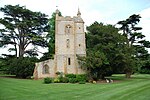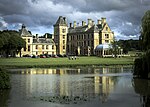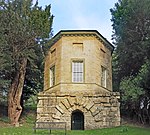Pillerton Priors
Civil parishes in WarwickshireStratford-on-Avon DistrictVillages in WarwickshireWarwickshire geography stubs

Pillerton Priors or Over Pillerton is a settlement and civil parish 11 miles (18 km) south of Warwick, in the Stratford-on-Avon district, in the county of Warwickshire, England. In 2011 the parish had a population of 294. The parish touches Ettington, Oxhill and Pillerton Hersey. Pillerton Priors and Pillerton Hersey are jointly known as "The Pillertons".
Excerpt from the Wikipedia article Pillerton Priors (License: CC BY-SA 3.0, Authors, Images).Pillerton Priors
Stratford-on-Avon Pillerton Priors CP
Geographical coordinates (GPS) Address Nearby Places Show on map
Geographical coordinates (GPS)
| Latitude | Longitude |
|---|---|
| N 52.126221 ° | E -1.5744745 ° |
Address
CV35 0PQ Stratford-on-Avon, Pillerton Priors CP
England, United Kingdom
Open on Google Maps









